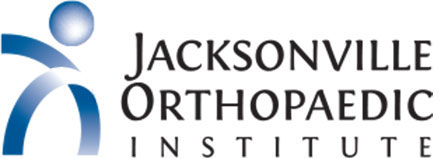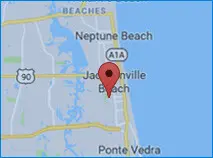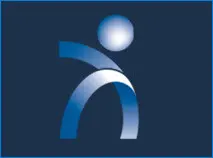Tennis Tips
Tennis Tips
Please watch this Video on Tennis Elbow.
Choosing the Right Tennis Racquet

Picture of Tennis Racquet
A tennis racquet is the most important piece of equipment for a tennis player; you can’t play tennis without a racquet! There are many decisions to ponder when selecting a racquet and it can be quite intimidating. Choosing the wrong racquet can make you more susceptible to injuries, so consider these tips when picking the racquet that’s best for you.
Consider Your Tennis Style of Play
Do you like to play from the baseline? Choose a lighter racquet that is head heavy. A lighter racquet will be easier on your arms for the long rallies from the baseline. The head heavy lighter racquet allows for more power from a lighter frame, thus reducing the tendency to over hit for power.
Players who prefer to volley from the net tend to prefer head light racquets due the improved ability to move and control the racquet. This leads to less stress on the elbow and wrist to maneuver the racquet while volleying.
An all court player would prefer a balanced racquet, as to not overly stress their upper extremity with one particular part of their game with an unbalanced racquet.
Tennis Injury History

Tennis Tips
There are a number of factors that can contribute to injuries in tennis. A racquet can lead to overuse injuries, and certain types of racquets are a good choice with a history of injuries.
With a history of wrist or elbow injuries, such as tennis elbow or tendonitis of the wrist, be sure you have the right size grip. Measure from the middle crease of your palm to the tip of your ring finger; this distance is your grip size. If your measured distance falls between two grip sizes, choose the smaller grip size and consider using additional grip tape to increase the grip size for comfort.
A more flexible racquet allows for less vibration transmitted to the wrist and elbow, and allows for more comfort on ground strokes with a history of wrist or elbow injuries. Flexible racquets are defined as <45 flexibility, but start with a racquet more flexible then your current racquet if you are looking for more comfort.
With a history of shoulder injuries, such as a rotator cuff injury or shoulder impingement, a player may prefer a lighter racquet for overhead shots. A lighter frame with a wider beam width (28mm or more) will allow for more power, and would be a good option for players with musculoskeletal limitations.
Tennis Experience and Your Tennis Rating
Players who are just starting to play tennis tend to miss hit shots due to poor stroke technique or footwork. A good starter racquet should be light (less than 10oz), have an oversized head (>106 square in) and a wide beam width (>25mm or more). This will allow for more power with a larger “sweet spot” that will be more forgiving to the forearm with miss hit shots.

Picture of Tennis Tips
In 2008, Dr. Yorio was named the Director, Player Medical Services for the US Open Tennis Championships in Flushing Meadows, New York. In this position, he was responsible for coordinating and providing care to elite professional tennis players from around the world, both on and off the court. He has been a volunteer member of the USTA Sports Science Committee since 2007 and was Team Physician for the Molloy College Athletic Department, Hofstra University and for the New York Dragons, as well as a member of the medical staff for the New York Islanders. He now joins the NFL Jacksonville Jaguars as their team physician and will provide Primary Care Sports Medicine at the Jacksonville Orthopaedic Institute San Marco location.
Drink for Success on the Court
Professional tennis players universally take the opportunity during their changeover or set breaks to drink fluids. The goal of drinking while playing tennis is to prevent dehydration and replace electrolyte losses. Staying hydrated will help you to perform at your best and reduce your risk of a heat-related illness when playing tennis while the temperature is high.
Water or “sports drinks” are good choices for drinking while playing tennis. Players should individualize their drinking strategies with a goal of offsetting fluid and electrolyte losses during exercise. Have a plan for drinking before, during, and after a match or a training session.
3 Hydration Keys During Match Play:
1. Pre-match Hydration Key: Start play well hydrated
• Start drinking a few hours prior to your match. This way you can step on the court appropriately hydrated.
2. In-Match Hydration Key: Drink to replace the fluid you lose due to sweating
• Everyone sweats at a different rate in that some sweat more heavily than others. An individual’s sweat rate can change depending on the temperature, intensity of exercise, and acclimatization to the heat. Therefore, each individual tennis player will have his or her own recommendations for drinking during match play. Talk to a Primary Care Sports Medicine physician about how to calculate your sweat rate.
3. Post-Match Hydration Key: Replace fluid and electrolyte losses prior to next match
• A simple way to estimate the amount of sweat lost in a match is to check your weight before and after the match. The amount of weight lost during a match should be replaced through fluid intake prior to your next match as a part of your recovery.
Is there such a thing as drinking too much water? Yes, drinking too much water during exercise can lead to a condition called Exertional Hyponatremia, which is rare but can be life threatening. Be sure to discuss your hydration strategies with a health care professional.
A quick word about sodium. Sodium is an electrolyte lost in sweat during exercise, and when sweating heavily while playing tennis in the heat you may need to supplement your diet with sodium to replace what was lost with exercise. Check with your health care provider regarding sodium supplementation options for tennis players, especially if you have any medical conditions or are on any medications.

Picture of Water + Electrolytes+ Hydration
Serving for the Win – Nutritional Tips for Tennis
“Whether you play tennis to stay in shape, to have fun with friends, for the competition, or for all of the above reasons: eating right is a key component to being at your best on the court. Not only is it important to make the right choices of foods to eat, but the timing of the meals is also essential”. Dr. Michael Yorio, the Jacksonville Jaguars Internal Medicine Physician and Internal Medicine/Sports Medicine Physician at the Jacksonville Orthopaedic Institute in Jacksonville, Florida.
Let’s Consider Some Nutritional Decisions Based Upon Timing of the Meals:
1) Tennis Pre-match meal
Tennis is a very intense total body exercise, so it is important to have a meal of some sort prior to starting to play. Focus on foods high in carbohydrates for the pre-event meal, and the closer to the start of the match the smaller the meal. A meal 4 hours before a match can be a fairly typical meal, such as pasta or chicken and rice. However, when grabbing something within an hour of playing, such as for a 7am court time or a match right after work, it should be something small that can be absorbed fairly quickly. Examples would be a plain bagel with jelly or a small smoothie.
2) Tennis in Competition Meal
Eating food during a match is important for optimal performance; especially if there happened to be no time for a pre-match meal, for a match lasting longer than one hour, or when playing in extreme temperatures. Items chosen for in competition meals should be made up of mainly simple carbohydrates that are easy to digest, such as a banana or a sports bar. Remember, if you choose to drink sports drinks during a match you will be consuming some carbohydrates while hydrating.
3) Recovery Nutrition
While playing in a tournament, it is extremely important to select the right foods to eat while recovering from a match. The body has energy stores that have been depleted and need to be replenished, and many muscle groups that need to rest and recover. Therefore, choosing meals high in carbohydrates and proteins are key during the recovery period after a match.
The first two hours are very important for recovering muscles, so an effective strategy would be to have a meal immediately after a match, such as pretzels, low fat chocolate milk, yogurt, or a smoothie. Then, sit down for a regular sized, well balanced meal with emphasis on carbohydrates and proteins to help restore your energy stores before your next match.
Following a nutritional strategy which includes pre-match, in competition, and recovery meals will help a competitive tennis player maintain their energy balance to perform at their best.
What if one’s goal is to lose weight and tennis is the exercise of choice to burn calories? The goal should be to be in negative energy balance (a body that burns more energy than consumed in the diet). As such, limiting the size and calorie content of pre-match, in competition, and recovery nutrition would be a more effective strategy to lose weight while still maintaining adequate energy levels on the court.
Elbow Pain?
“At the JOI Sport Center, we have programs to treat tennis elbow and work with tennis players to return them back to the sport that they love.”, states Dr. Michael Yorio, the Jacksonville Jaguars Internal Medicine Physician and Internal Medicine/Sports Medicine Physician at the Jacksonville Orthopaedic Institute in Jacksonville, Florida.
Anyone can do tennis elbow stretches like this one. Hold for 3 to 5 seconds and perform 4 repetitions. Repeat throughout the day for a total of 20 stretches.

Picture of the Proper Way to Stretch the Wrist
Is it Alright to Resume Tennis if I Still Have Swelling in my Ankle? I Feel Pretty Good Otherwise.

Picture of a Taped Foot for Tennis
Swelling as an indicator should be a reason to modify your activity. You may even be feeling pretty good with both the pain and level of movement at the foot. The reason is that you have little receptors around the joint that tell the brain how the joint is moving and the brain takes this information and uses it to tell the muscles how to correctly work to stabilize the joint.
When you have swelling even of minimal amounts it lessens the ability of these receptors to provide accurate information to the brain. The brains response may not be at the level to provide safe response for the activity that is required to stabilize the joint. So you may be placing yourself at risk for re-injury.
Related Articles: Tennis Elbow FAQ and How To Get Rid of Tennis Elbow
Photo Credits:
http://www.fangcan.com/upload/200908011249121171562.jpg
http://2.bp.blogspot.com/-JcDMyDyKxQo/Tu9Smr5MWsI/AAAAAAAAAMM/PRpG8MoizEQ/s1600/fg0-7645-5087-X_0301.jpg
http://www.tennisexpress.com/tennis/default/assets/Image/tennis_grip_size.jpg
http://khelmart.org/wp-content/uploads/2013/01/tennis_guide2.jpg
http://www.lifeionizers.com/blog/wp-content/uploads/Dehydration.gif
http://shop.hikingshack.com/App_Themes/Skin_2/images/catheads/electro.jpg
http://i4.mirror.co.uk/incoming/article855503.ece/alternates/s615/Andy%20Murray%20receives%20medical%20help%20
during%20his%20match%20against%20Jarkko%20Nieminen%20of%20Finland%20during%20the%20French%20Open
%20tennis%20tournament%20at%20the%20Roland%20Garros
http://www.reading-chiropractor.co.uk/wp-content/uploads/2012/06/knee-pain.jpg
https://sinewtherapeutics.com/images/elbow_12.jpg
JOI and JOI Rehab
JOI Physicians continue to offer online new patient appointments. This is another option to make it more convenient to make new patient appointments with less phone hold times. Follow the link below to select your JOI MD and schedule online.
You can still call 904-JOI-2000 to make new patient JOI Physician Appointments if that is your preference.
To make appointments with JOI Rehab, please call 904-858-7045.







